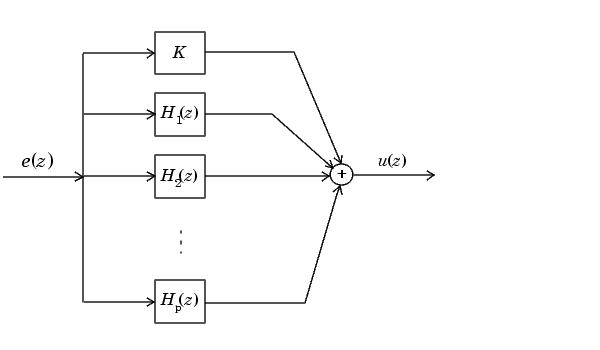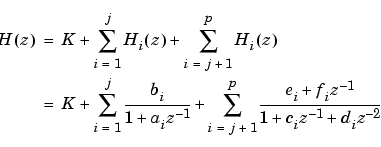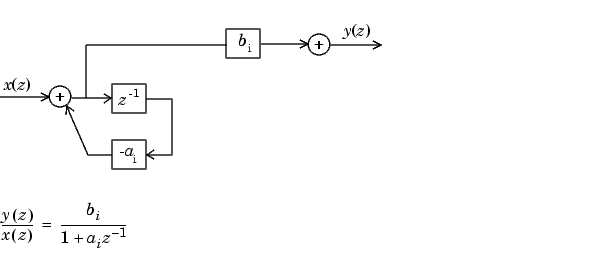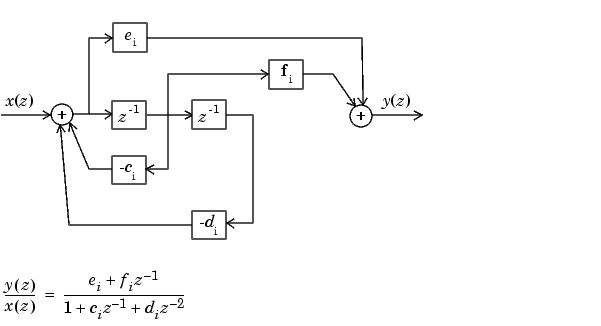

| Fixed-Point Blockset |   |
Parallel Form
In the canonical parallel form, the transfer function H(z) is expanded into partial fractions. H(z) is then realized as a sum of a constant, first-order, and second-order transfer functions, as shown:

This expansion, where K is a constant and the  are the first and second-order transfer functions, follows.
are the first and second-order transfer functions, follows.

As in the series canonical form, there is no unique description for the first-order and second-order transfer function. Due to the nature of the Sum block, the ordering of the individual filters doesn't matter. However, because of the constant K, you can choose the first-order and second-order transfer functions such that their forms are simpler than those for the series cascade form described in the preceding section. This is done by expanding H(z) as

The first order diagram for H(z) follows.

The second order diagram for H(z) follows.

The parallel form example transfer function is given by

The realization of Hex(z) using the Fixed-Point Blockset is shown below. You can display this model by typing
 | Series Cascade Form | Tutorial: Feedback Controller Simulation |  |